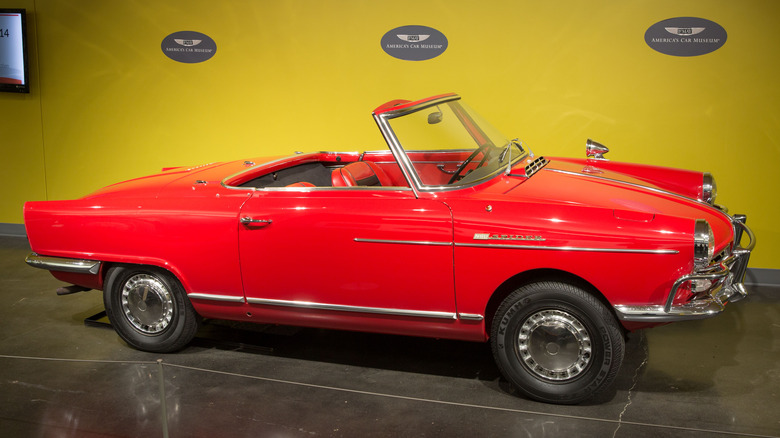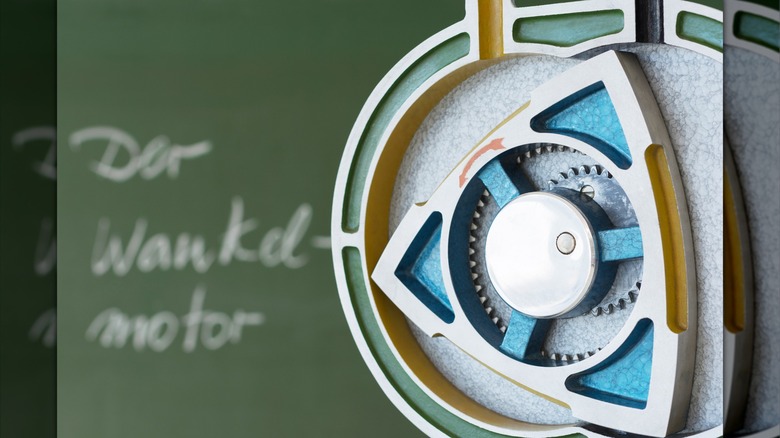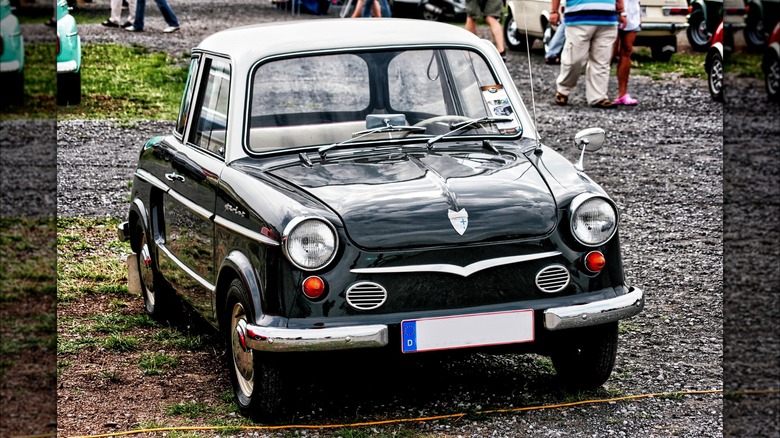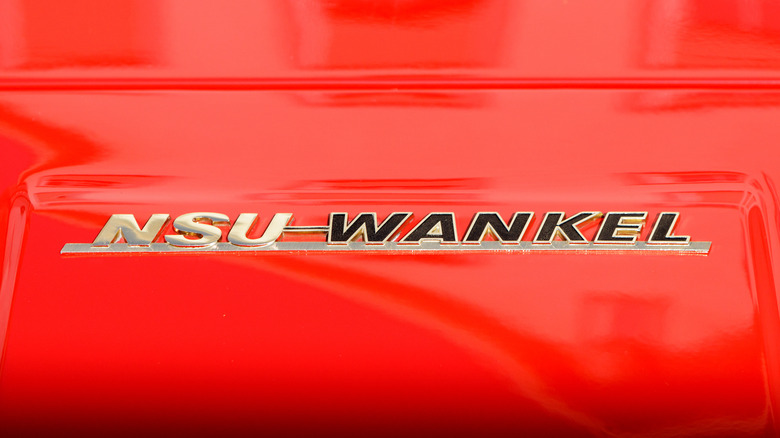Did Audi Build The First Rotary Engine Car? The Story Of The NSU Spider
When most people hear the term "rotary engine," they probably think of Mazda first, as rotary engines have been part and parcel of the Japanese automaker's mantra for decades. In fact, Mazda proclaims, "Without the rotary engine, there would probably be no Mazda."
In simplest terms, a rotary engine has a three-sided rotor spinning inside a housing that starts the combustion process instead of the typical reciprocating pistons like those in traditional internal combustion engines. This design makes it smaller and lighter, while boasting a better power-to-weight ratio than a standard engine. Its exceptional performance — especially given its displacement — allows for a smoother, quieter ride. What most people may not realize is that a German originally created the rotary engine that powered those Japanese Mazda vehicles.
Felix Wankel was born in Lahr, Germany, in 1902, and worked as an apprentice clerk at a publishing house. However, as his passion for innovation grew, he ditched that job and focused on tinkering with a new kind of engine design — which he supposedly came up with at the ripe young age of 17.
The rotary engine wasn't a new concept, but it was considered by many as an impractical idea that couldn't work realistically. By the late 1920s, he was focused on creating a rotary valve control for a motorcycle engine — and in 1934, successfully fired up his first working rotary engine. While a Wankel engine is a type of rotary engine, not all rotary engines are Wankel engines.
NSU brought the Wankel rotary engine to life
Wankel first met Walter Froede, a professionally trained engineer, during World War II, and went to work with Froede at the German motorcycle company NSU Motorenwerk AG in 1951. NSU was founded by two German mechanics in 1873 who, for the first two decades, built nothing but knitting machines. Their first motorcycle wasn't built until 1901, and their first car came some five years later. They stopped making automobiles entirely in 1929, and wholly focused on bicycles and motorcycles. All of this historical context is important to know because in 1969, NSU Motorenwerke merged with Auto Union GmbH to form Audi NSU Auto Union AG — which became today's automaker Audi.
In 1954, Wankel finished designing a rotary piston engine for NSU known as the Drehkolbenmotor (or the DKM). This rotary-valve-controlled 250cc motorcycle engine was based on the company's Lux and Max models. It took another three years of tweaks before the world's first rotary piston engine (the DKM 54) was successfully started — on a test bench.
The DKM 54 ran great for 15 hours, then started having apex seal problems (a problem that has plagued rotaries and given them a bad rap). After being out of the car game for almost three decades, NSU decided it was time to come back. Engineers redesigned the engine from the ground up with the hopes of developing more car engines down the road. In early 1959, the Kreiskolbenmotor (KKM) 250 roared to life — again on the test bench.
The Prinz became a Spider
Meanwhile, Japan was in the midst of a post-war industrial effort to become a competitive player in the global automotive sector. Mazda wanted to "defy convention" to differentiate themselves from other Japanese brands. NSU engineers continued to work on the KKM 250, and eventually dropped it into an ivy green test vehicle dubbed the "Prinz" in the summer of '59.
A few months later, the KKM 400 (an upgraded version of the 250) was dropped into a Sport model Prinz, and NSU officially publicized that its rotary engine was ready for prime time. Approximately 100 companies, including General Motors, Nissan, Daimler-Benz, Toyota, and Porsche, signed up for licenses shortly after. In January 1961, Toyo Kogyo — better known today as Mazda — signed a contract with NSU, and two years later formed an RE (Rotary Engine) Research Department.
As the International Motor Show in Frankfurt was about to take place in September 1963, NSU unveiled a monocoque-bodied convertible designed by the famed Giuseppe "Nuccio" Bertone called the "Spider." The engine — complete with transmission, alternator, and starter — weighed just 276 pounds. What's more, its dimensions were so small it could literally fit under the floor in the rear of the vehicle, thus providing not one, but two trunks (one in the front and one in the rear). Additionally, NSU claimed that the new Wankel engine emitted such low vibrations that it ran quieter than a standard six-cylinder engine.
Wankel's rotary engine was a hit
The stylish Spider — available in Alfa Red or Lily White — was the world's first production car with a single-rotor Wankel engine. It was well received both internally at NSU, and by the public at the International Motor Show in 1963. Unfortunately, sales never matched the enthusiasm, and by July 1967, only 2,375 cars had been built. Later that same year, NSU a redesigned twin-rotor Wankel engine in the Ro 80 (considered one of the best cars ever built with a rotary engine), which also failed to capture sales.
In May 1967, Mazda unveiled the Cosmo Sport (aka the 110S), a dual-rotor rotary engine car that became the world's first (mere months ahead of the NSU). Mazda began selling rotary-powered sedans and coupes in Europe and Asia the following year. When the Cosmo finally reached the shores of the United States in 1971, it went on to sell approximately 100,000 cars in 1972. The Cosmo did indeed defy convention and allowed Mazda to become a true competitor in the global automotive sector.
Ironically, Felix Wankel never bothered to get a driver's license, and didn't technically earn an engineering degree by attending school. However, he was given an honorary doctorate from the Technical University of Munich in 1969.



